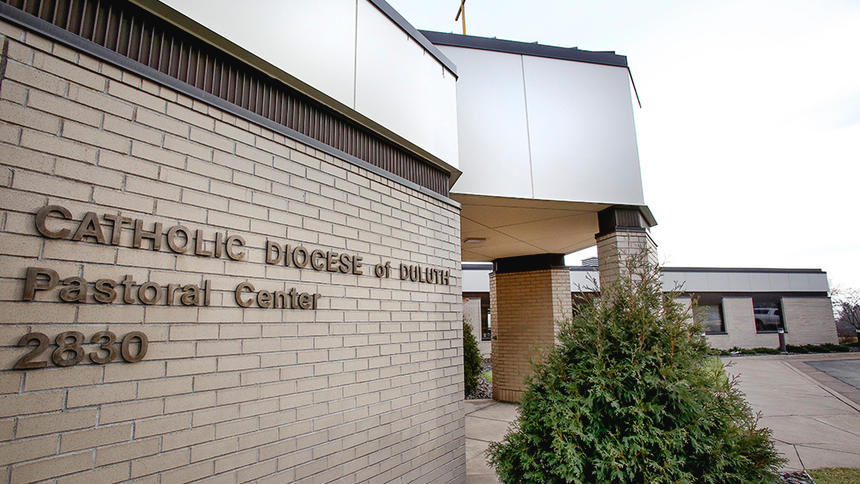Diocese of Duluth Opens Books for Bankruptcy Proceedings
By Peter Passi
Creditors' attorneys attempted to pick apart the finances of the Catholic Diocese of Duluth at a hearing Friday in U.S. Bankruptcy Court. The diocese filed for Chapter 11 bankruptcy protection in December, about one month after a St. Paul jury ordered it to pay nearly $4.9 million in damages to a man who was sexually abused by a priest in Itasca County. The decision stems from the sexual abuse the man endured as an altar boy more than 35 years ago at the hands of the late Rev. J. Vincent Fitzgerald. Franz Hoefferle, the finance director for the diocese, on Friday told Sarah Wencil, an attorney for the U.S. Trustee's Office: "There was a judgment rendered against the diocese that we felt we could not pay." He said the diocese typically breaks even on an annual budget that is based on operating revenues of about $3.5 million. Hoefferle said that as of November, the diocese had net assets of a little more than $5 million and total liabilities of just over $12 million. Meanwhile, the diocese has faced many more allegations of sexually abusive priests since the Minnesota Child Victims Act was passed into law, opening the way for lawsuits that previously were barred by statutes of limitation. Past victims of priests who worked for the Diocese of Duluth have until May 25 to file claims against the church in federal bankruptcy court. Ford Elsaesser, an attorney representing the diocese, said it was difficult to know exactly how many claims will be made until after the May deadline has passed. "We're not to a final number yet, but we're in the range of 40 claims right now," he said. When asked how many different priests from the diocese were accused, Elsaesser said: "I think it's in the 30s." The additional sexual abuse claims that continue to emerge were yet another factor that prompted the diocese to file for bankruptcy protection rather than forfeit most of its assets to a single victim, Hoefferle said. "There are a number of other victims we are aware of, and we wanted to make sure there was a just distribution of our assets," he said. Jeff Anderson, an attorney representing several victims of sexual abuse, questioned Hoefferle about the values he assigned to the diocese's pastoral center and other properties, and Elsaesser agreed that more probably could be done to refine those numbers going forward. Anderson also asked whether the diocese couldn't exercise its discretion to collect more in the way of revenues from its 82 parishes. He probed Bishop Paul Sirba's role in the governance of parishes, the Calvary Cemetery and three separate endowments as well, suggesting they all were essentially under the control of the diocesan leadership. Anderson asked Hoefferle about a $500,000 contribution the diocese made to a foundation set up to benefit seminary operations. Hoefferle confirmed that the contribution was made in November — the same month the $4.9 million judgment against the church was handed down. But Hoefferle said he didn't know whether the donation occurred before or after the judgment was announced. Hoefferle also fielded questions about any support the diocese continued to provide to priests credibly accused of abuse. Anderson questioned whether the diocese had provided payment for any of the accused priests to receive treatment at St. Luke's or elsewhere. Hoefferle said he occasionally signed checks for medical care but did not know the exact nature of the care provided. He said such questions would be better directed to Vicar General James Bissonette. A mediator has been assigned to the case, but it remains to be seen if a settlement can be reached or whether the bankruptcy will play itself out fully in the courts. Anderson said he has many questions that still need to be answered. "We have serious concerns, because this church has such a history of hiding sexual offenders and has made such a practice of trying to hide the files that would expose them. It begs the question: If they had the will and ability to hide abusers for so long, wouldn't they try to hide their assets, too?" he said. "That's why this inquiry has started and why it will continue," Anderson said.
|
.
Any original material on these pages is copyright © BishopAccountability.org 2004. Reproduce freely with attribution.
